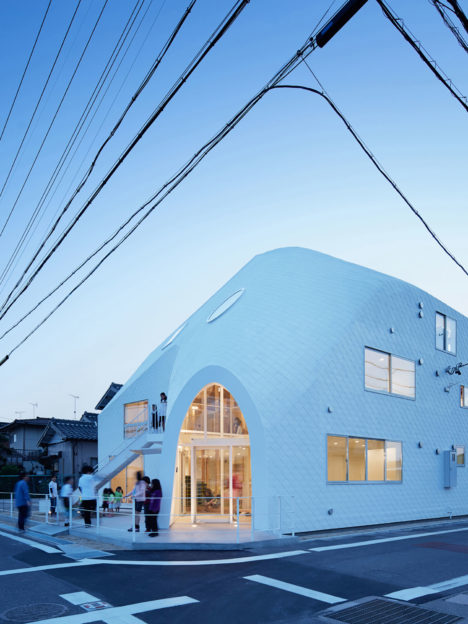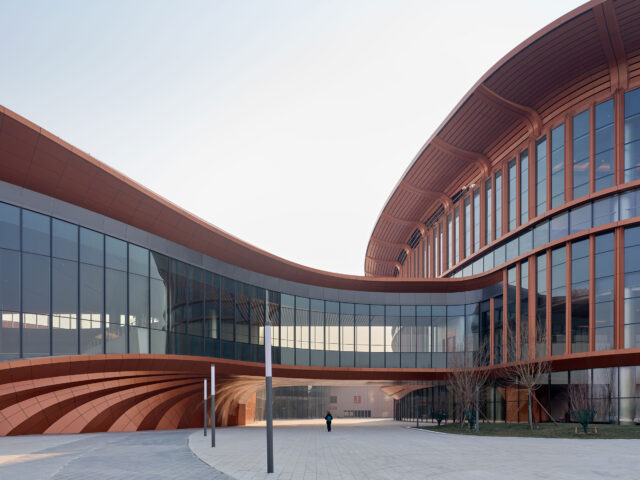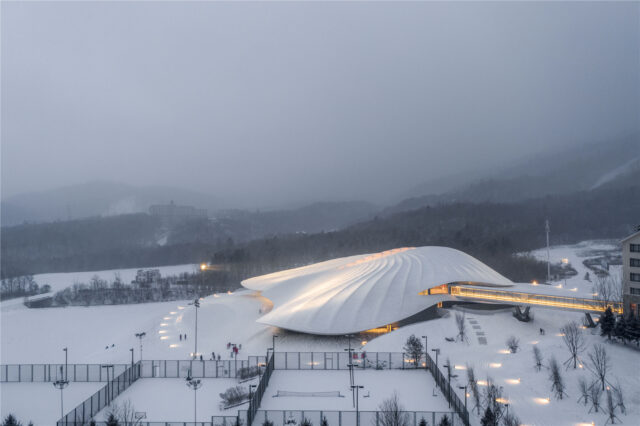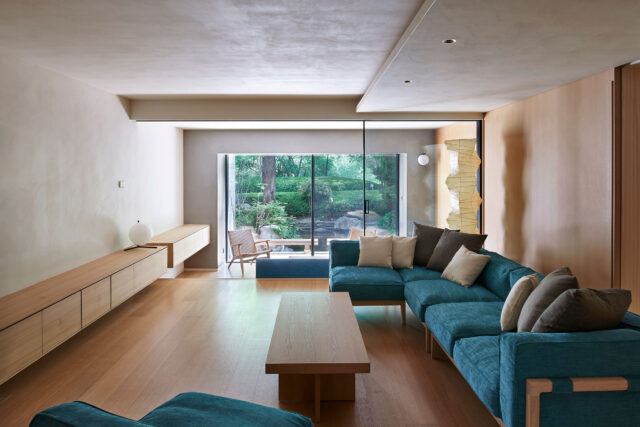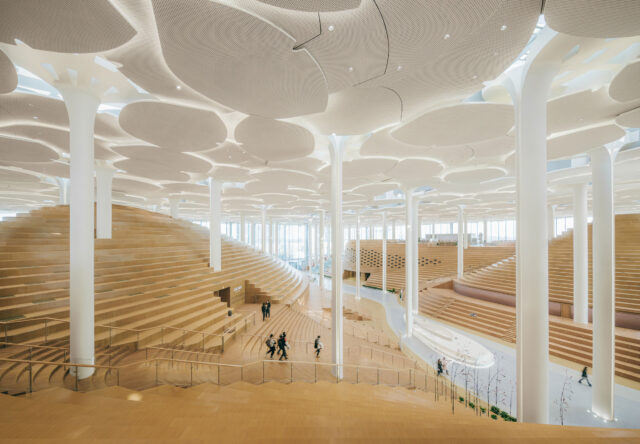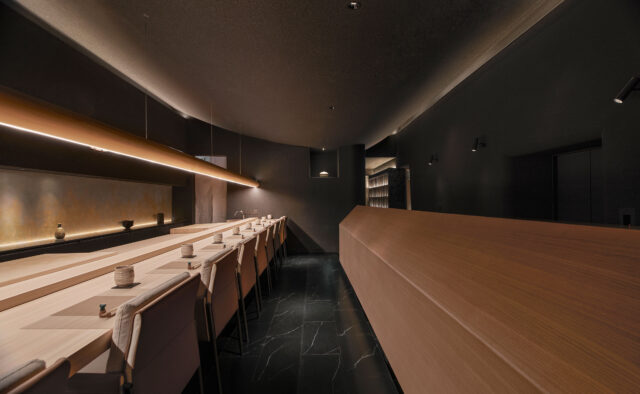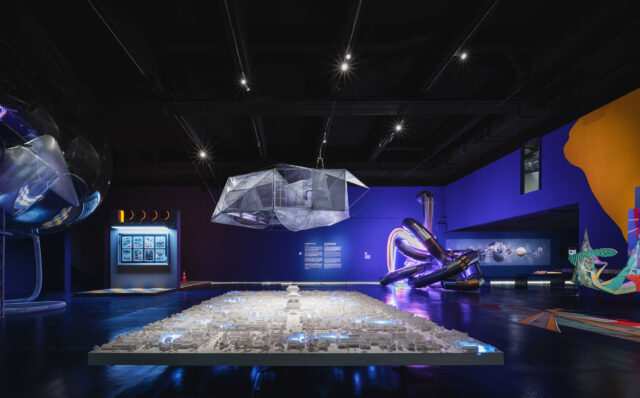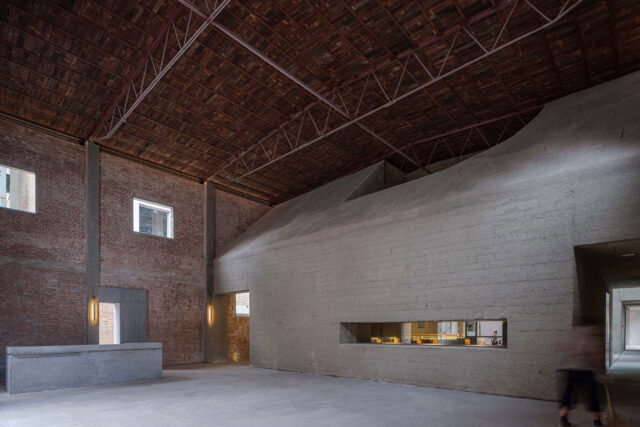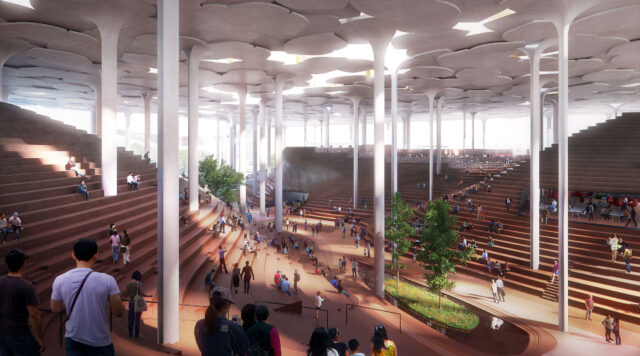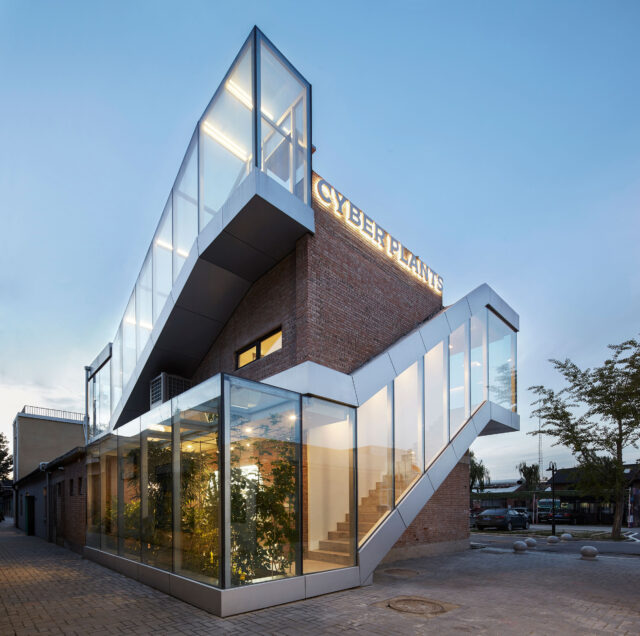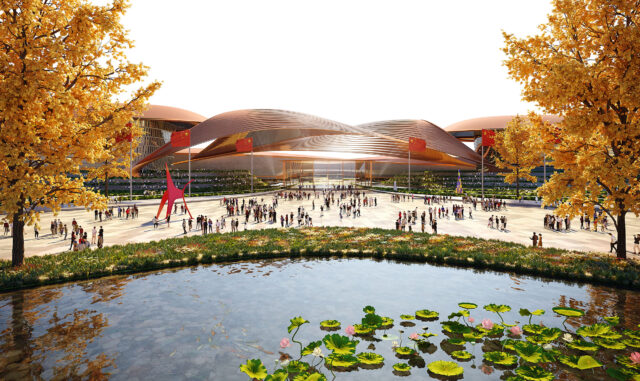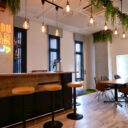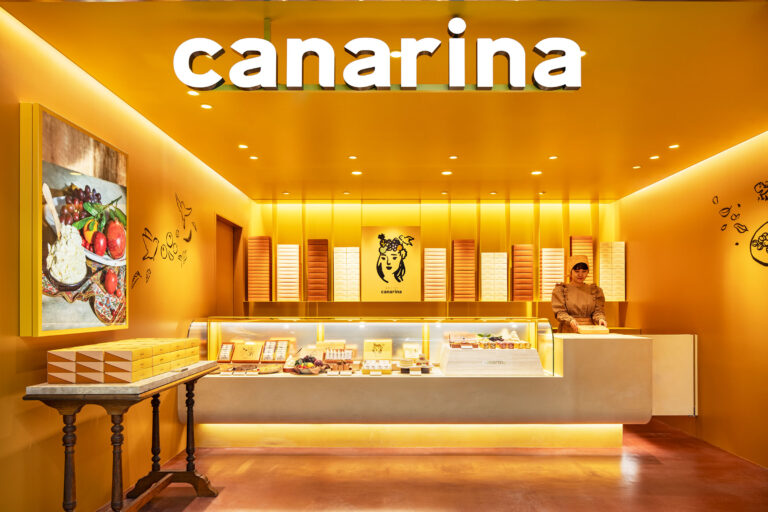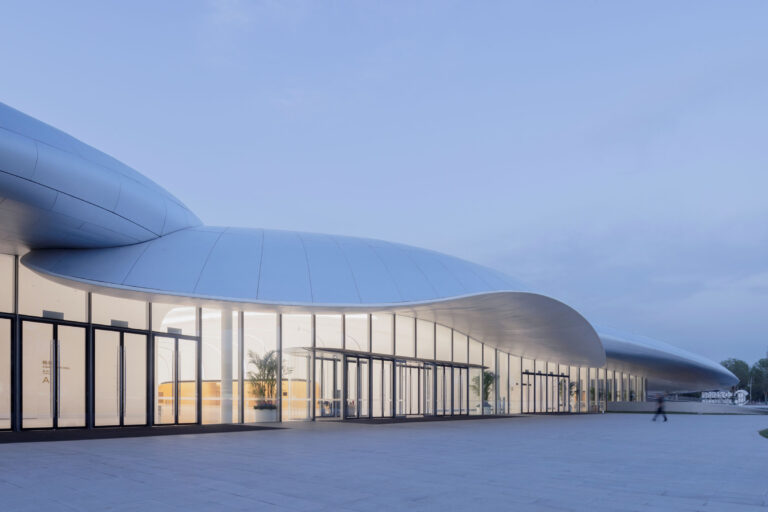
SHARE MADによる、中国・北京の「ZGC・インターナショナル・イノベーション・センター」。地域で行われる国際会議の常設会場。科学・技術・文化交流の中心地を目指し、公共空間も創出する“有機的な曲面”の屋根を特徴とする建築を考案。クリーンでシンプルな内装で議論の為の風通しの良い環境も構築




MADが設計した、中国・北京の「ZGC・インターナショナル・イノベーション・センター」です。
地域で行われる国際会議の常設会場の計画。建築家は、科学・技術・文化交流の中心地を目指し、公共空間も創出する“有機的な曲面”の屋根を特徴とする建築を考案しました。また、クリーンでシンプルな内装で議論の為の風通しの良い環境も構築しました。
こちらはリリーステキストの翻訳です
マー・ヤンソン / MADアーキテクツが、ZGC・インターナショナル・イノベーション・センターを完成させる
マー・ヤンソン / MADアーキテクツは、北京のZGC・インターナショナル・イノベーション・センターの竣工を誇らしく発表します。このセンターは、毎年開催される中関村フォーラム(ZGCフォーラム)の常設会場として特別に設計されたもので、総床面積は約65,000㎡、17,000㎡の屋上緑化を特徴としています。
ZGCフォーラムは、イノベーションとテクノロジーに焦点を当てた国際会議で、北京の海淀区中関村で毎年開催されています。この地域は、自然や歴史と近代性や技術の進歩が融合しています。近くには玉泉山、頤和園、圓明園といった歴史的建造物があり、北京大学や清華大学といった名門大学もあります。中国のシリコンバレーとして知られる中関村は、数多くのハイテク企業、スタートアップ企業、研究機関を抱える巨大な技術ハブです。
2007年の創設以来、ZGCフォーラムは中心テーマとして「革新と発展」を掲げ、国内外の科学者、起業家、新進の才能を引きつけ、さまざまなテーマについて画期的なアイデアを共有し、議論してきました。長年にわたり、ハイテク技術革新、交流、協力の未来をリードする世界的なプラットフォームへと発展してきました。
マー・ヤンソン / MADアーキテクツが設計したZGC・インターナショナル・イノベーション・センターは、人類、都市、環境の深いつながりを育みます。木々、庭園、歩道、周囲の庭園や丘陵を拡張する建築的特徴で構成された、アクセスしやすい屋上緑化公園で街並みに溶け込み、周囲の山々から見ると完全に姿を消します。
センターの生物形態的なクローバーのようなフォルムは、柔らかく流動的な形状を特徴とする片持ち屋根が特徴とします。フォルムは頭上に浮かび、太陽からの陰を提供し、自然の要素からの保護を提供し、社会的交流のための空間を提供します。これにより、人々と建築とのつながりが強化されます。
透明なファサードのカーテンウォールは、その軽さ、透明性、流動性によって特徴づけられ、建物の彫刻的なフォルムの有機的な曲線に沿っています。隠されたフレームシステムと大きなガラスパネルが、屋内と屋外の流動的な移行を促し、周囲の環境とのシームレスな融合を生み出しています。
MADは、革新的なアイデアを交換するためのオープンで風通しの良い環境を作り出すために、クリーンなラインのシンプルなインテリアをデザインしました。ZGC・インターナショナル・イノベーション・センターには、2つの巨大なETFE膜の天窓があり、自然光が会場に降り注ぎ、利用者の空間と光の体験を高めています。インテリアのシンプルさは、社交性を高め、エンゲージメントを促進する、ユーザーフレンドリーな空間の創造を目指しています。統合された照明デザインには、建物の曲線に沿って移動し、中央の照明彫刻に収束する色温度調節可能な照明が含まれ、ユニークな未来的環境を作り出しています。先進的な技術と革新的な感覚の使用によって特徴付けられます。
機能的なスペースはジグザグにレイアウトされ、イベント会場のメインとなる2階のバンケットホールとマルチファンクションホール、地下1階には小規模な会議室とVIPラウンジがあり、様々な規模やプライバシーの会議のニーズに対応しています。
建物の屋根は、2,769枚のフルオロカーボンでコーティングされたダブルカーブハニカムアルミニウムパネルで構成されています。様々な密度のパターンで配置されたこれらのパネルは、構造物を覆い、雨水の収集を促進します。夜には、屋根のルーバーに隠された照明が屋根のラインとシンクロします。それらは都市景観に溶け込み、市道を行き交う果てしない交通量と呼応しながら、移動の感覚を生み出しています。緑の屋根は、近隣の庭園や丘の延長として機能し、街の中にのどかな緑の風景を作り出しています。
ZGC・インターナショナル・イノベーション・センターの換気システムは、吊り天井とグリーンルーフのコンクリート製の “血管 “の下に隠されており、建物はクリーンでシンプルな外観となっています。屋根に軽量土壌と低メンテナンスの植生を使用することで、屋根の荷重要件、景観の外観要件、品質要件を満たしながら、ランドスケープ運用コストを削減します。同センターはさらに、太陽光発電システムや地中熱ヒートポンプなどの再生可能エネルギーを採用しています。また、二次エネルギー効率の高い電気機械設備を使用してゼロ・エネルギー会議室を作り、周辺の公共施設と比較して二酸化炭素排出量を50%以上削減しています。
MADのデザインは12メートルの高さ制限を尊重し、建物は北から南へ緩やかに広がり、周囲の環境に溶け込みます。同センターの「クローバー型」のデザインには、自然と結びついたさまざまな公共スペースが含まれています。張り出した屋根と屋外エリアは、自由にアクセスし利用できる都市の公共スペースを提供します。敷地の北東側には歴史的な樹木が保存され、沈んだ中庭に組み込まれており、賑やかな街の中に静かな空間を提供しています。サンクンガーデンのデザインは、地下の会議室やパブリックスペースが自然光で満たされ、地上の空間のように見え、感じられることを保証しています。
中関村フォーラムの恒久的な敷地の設計は2020年に始まり、2022年8月に着工しました。2024年4月25日から29日まで、中関村フォーラムの第14回年次総会が新センターで開催されました。
マー・ヤンソン / MADアーキテクツのZGC・インターナショナル・イノベーション・センターのデザインは、ZGCを科学、技術、文化交流のグローバルな中心地として確立します。それは環境の延長であり、都市、地域社会、公共のためのオープンスペースなのです。
以下の写真はクリックで拡大します



























以下、建築家によるテキストです。
Ma Yansong/MAD Architects Completes ZGC International Innovation Center
Ma Yansong/MAD Architects proudly announce the completion of the ZGC International Innovation Center in Beijing. The center, designed specifically to serve as the permanent venue for the annual Zhongguancun Forum (ZGC Forum), spans a total floor area of approximately 65,000 square meters and features a 17,000 square meter green roof.
The ZGC Forum is an international conference focused on innovation and technology held annually in the Zhongguancun area of Beijing’s Haidian District. This area, blends nature and history with modernity and technological advancements. It’s near historical landmarks like Yuquan Mountain, the Summer Palace, and Yuanmingyuan Garden, alongside prestigious universities such as Peking University and Tsinghua University. Known as China’s Silicon Valley, Zhongguancun is a major tech hub hosting numerous high-tech companies, startups, and research institutions.
Since its inception in 2007, the ZGC Forum has taken “Innovation and Development” as its central theme, drawing national and international scientists, entrepreneurs, and emerging talents to share and discuss groundbreaking ideas on a variety of topics. Over the years, it has evolved into a leading global platform for the future of high-tech innovation, exchange and cooperation.
The ZGC International Innovation Center, designed by Ma Yansong/MAD Architects, fosters a deep connection between humanity, the city, and the environment. It blends into the cityscape with an accessible green roof park, consisting of trees, gardens, walkways, and architectural features that extends the surrounding gardens and hills making it completely disappear when viewed from the surrounding mountains.
The center’s biomorphic, clover-like form features a cantilevered roof characterized by soft, fluid shapes. The form floats overhead, providing shade from the sun, shelter from the elements, and a space for social interaction, enhancing the connection between people and the architecture.
The transparent facade curtain wall, characterized by its lightness, transparency, and fluidity, follows the organic curves of the building’s sculptural form. The concealed framing system and large glass panels encourages a fluid transition between indoor and outdoor realms creating a seamless integration with its surroundings.
MAD designed a simple interior with clean lines to create open, airy environment for the exchange of innovative ideas. The ZGC International Innovation Center features two giant ETFE membrane skylights, allowing natural light to flood the venue, enhancing the user’s experience of space and light. The simplicity of the interior aims to creating user-friendly spaces that enhance social interaction and promote engagement. The integrated lighting design includes adjustable color temperature lights that move along the building’s curves. and converge in the central luminary sculpture, creating a unique futuristic environment. characterized by the use of advanced technologies, and a sense of innovation.
The functional space is laid out in a zigzag pattern, with the main venue, with banquet hall and multi-function hall on the first floor being the main space for events; and a series of smaller meeting rooms and VIP lounges on the basement level to meet the needs of meetings of different scales and privacy.
The building’s roof is composed of 2,769 fluorocarbon-coated double-curved honeycomb aluminum panels. These panels, arranged in varying patterns of density, that cover the structure and facilitate rainwater collection. At night, lights hidden within the roof louvers synchronize with the roof lines. They create a sense of movement, echoing the endless traffic on the city roads further blending into the urban landscape. The green roof serves as an extension of the nearby gardens and hills, creating a tranquil green landscape within the city.
The ZGC International Innovation Center’s ventilation system is hidden under the concrete “veins” of the suspended ceiling and green roof, giving the building a clean and simple appearance. The use of lightweight soils and low-maintenance vegetation on the roof reduces landscape operating costs while meeting roof loading requirements, landscape appearance and quality requirements. The center further employs renewable energy sources such as solar photovoltaic systems and ground-source heat pumps. It also uses secondary energy-efficiency electromechanical equipment to create a zero-energy conference room, reducing carbon emissions by over 50% compared to the surrounding public buildings.
MAD’s design respects a 12-meter height limit, with the building gently spreading from north to south, blending into the surrounding environment. The center’s ‘clover-shaped’ design includes a variety of public spaces connected with nature. The overhanging roof and outdoor areas offer urban public spaces for free access and use. A historic tree was preserved on the northeast side of the site has been integrated into a sunken courtyard, providing a tranquil space within the bustling city. The sunken garden design ensures that the underground conference rooms and public spaces are filled with natural light, making them appear and feel like above ground spaces.
The design of the permanent site of the Zhongguancun Forum began in 2020, and groundbreaking took place in August 2022. The 14th Annual Meeting of the Zhongguancun Forum was held at the new center from April 25-29, 2024.
Ma Yangsong/MAD Architects’ design for the ZGC International Innovation Center establishes it as a global focal point of scientific, technological, and cultural exchange. It serves as extension of the environment and an open space for the city, community, and public.
■建築概要
ZGC International Innovation Center
Beijing, China
2020 – 2024
───
Typology: Conference Center
Site Area: 59,099 square meters
Building Area: 64,998 square meters (Above ground: 20,000 square meters, Underground: 44,998 square meters)
───
Principal Partners in Charge: Ma Yansong, Dang Qun, Yosuke Hayano
Associate Partners in Charge: Fu Changrui, Kin Li
Design Team: Zhou Rui, Zhuang Fan, Hu Jing-Chang, Liu Yiqing, Xue Yawen, Yang Xuebing, Edgar Navarrete, Zheng Chengwen, Wang Shuobin, Wu Qiaoling, Alan Rodriguez Carrillo
───
Client: Zhongjie (Beijing) Development and Construction Co., Ltd.
Architectural Design: MAD Architects
Executive Architect: Beijing Institute of Architectural Design Co., Ltd. | The First Architectural Design Institute
Curtain Wall Consultant: Inhabit (Beijing) Ltd.
Interior Design: MAD Architects, Beijing BIAD Decoration Engineering& Design Co., Ltd.
Landscape Design: MAD Architects, Guangzhou S.P.I Design Co., Ltd.
Floodlighting Consultant: TORYO International Lighting Design (Beijing) Center Co., Ltd.
Interior Lighting Consultant: Beijing TaiFu GuangDa Lighting Design Inc.
Signage Consultant: To Three Design
Acoustic and Video Consultant: Radio, Film and Television Design and Research Institute Co., Ltd
───
Photograph: Arch Exist, CreatAR Images, Zhu Yumeng, ChillShine

